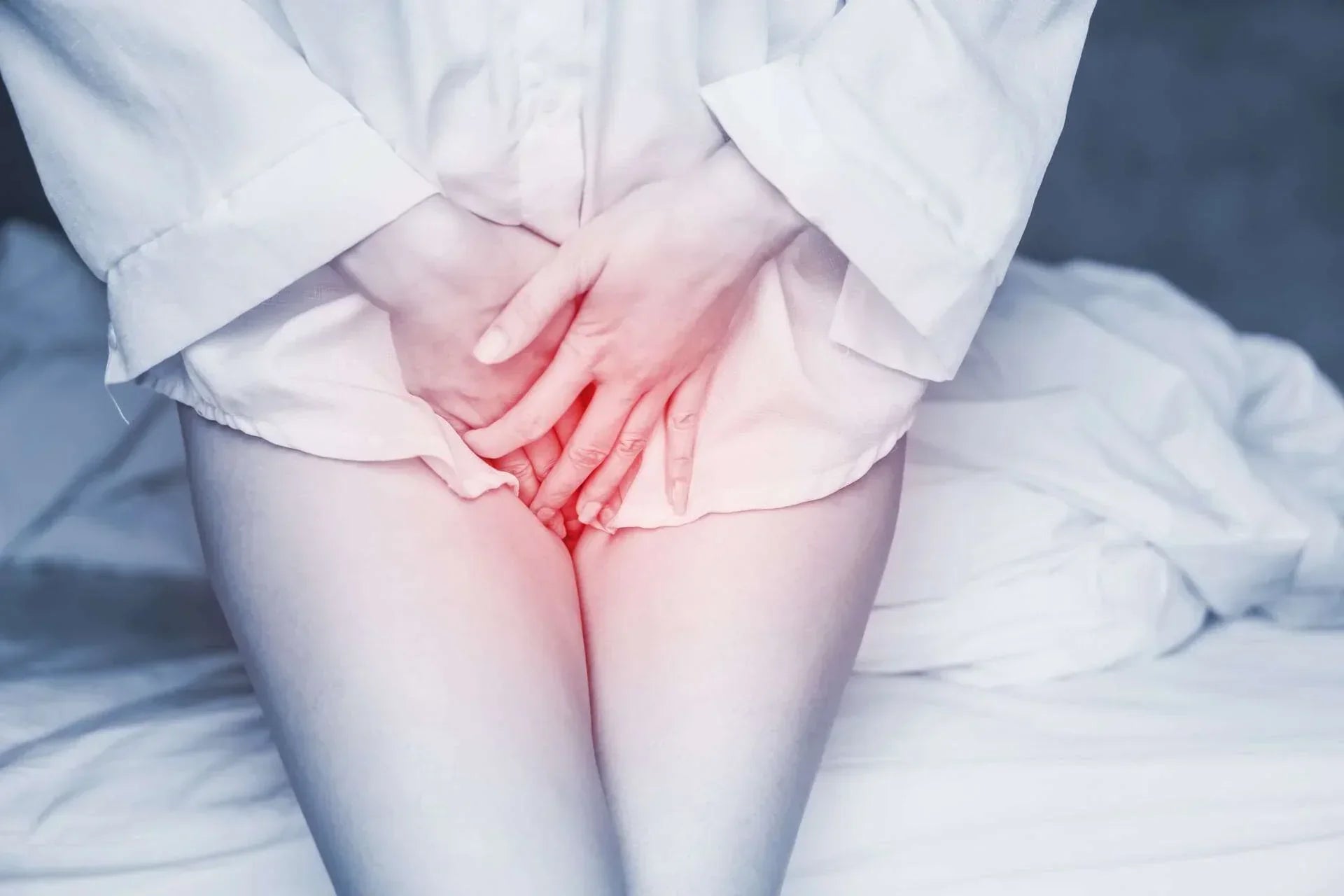Do you feel burning or pain when you urinate? Then you may be experiencing a urinary tract infection. This is a common problem in women, especially in menopausal and post-menopausal women (Angeluo et al., 2020). Here we want to tell you all about this infection so that you can identify it early and prevent it from occurring.
What is a urinary tract infection?
A urinary tract infection is an infection that occurs anywhere in the urinary tract (urethra, bladder, ureters, or kidneys). Although most occur in the lower urinary tract: the urethra and bladder (Mayo Clinic, 2020). This is one of the diseases caused by bacteria from the skin of the genital area or anus. These bacteria enter the urethra and move upwards. After, it can infect the rest of the urinary tract (bladder, ureters, and kidneys). The most common of these is Escherichia coli, a bacterium found in the intestines and rectum (Mayo Clinic, 2020).
Why are urinary tract infections so common in menopause?
You can rest assured: it's not just a problem that happens to you. Urinary tract infection is a common condition that occurs more frequently in women than in men. This is mainly due to certain body characteristics: women have a shorter urethra that is closer to the anus (MedlinePlus, 2020). It is estimated that every woman before 30 has had at least one urinary tract infection. In addition, at least 10% of women over the age of 50 (who are already menopausal) have UTIs. The highest frequency in menopausal women is due to changes in the genital and urinary system. This is a consequence of hormonal changes (Cedida, 2018; Gómez, 2010). Broadly speaking, these are (Angeluo et al., 2020; Duarte & Vargas, 2020; Gómez, 2010):
- Vaginal pH changes that favour colonisation of the area by bacteria.
- Retention of urine in the bladder can encourage the growth of bacteria.
- Thinning of the mucosa of the urethra and vagina.
- Fusion of the labia majora or labia minora of the vulva may occur. As a result, this situation makes hygiene difficult.
- Added to this are vaginal, urethral, or pelvic floor prolapses. These can be a consequence of menopause, age, and even the number of pregnancies and childbirths.
Risk factors
Menopause creates increased risks of urinary tract infection, but other factors may also play a role. For example (MedlinePlus, 2020):
- Diabetes.
- Having a kidney disease such as kidney stones.
- Urinary or bowel incontinence.
- Having a urinary catheter or having undergone urinary tract surgery.
- Having trouble emptying the bladder when urinating.
- Being bedridden for a long time. This is the case, for example, with hip fractures.
Signs and symptoms of urinary tract infection
At this point, you probably want to know if you are suffering from this problem. Well, symptoms may vary from person to person. However, the most common are as follows (Mayo Clinic, 2021):
- Discomfort when urinating, especially a burning sensation.
- Cloudy appearance of urine.
- You may also see urine that is darker in colour, reddish, or streaked with blood.
- Foul-smelling urine.
- You may have frequent urges to go to the toilet but only urinate in small amounts.
- Pain at the end of urination.
- Some women may experience pelvic pain.
These signs and symptoms may be enough for your doctor to identify a urinary tract infection. However, he or she may ask for laboratory analysis of a urine sample to confirm the diagnosis. This can be done through a simple urine test or urine culture. And only in severe cases, or if he suspects other concomitant urinary tract diseases, he may order imaging studies such as a renal ultrasound or CT scan (MedlinePlus, 2020).
General treatment
If you think you suffer from this problem, don't worry: there are treatments to solve it! Treatment of urinary tract infection relies on antibiotics. The timing and type of antibiotic to use depend on the person, their history, and, in some cases, laboratory results (Mayo Clinic, 2020; MedlinePlus, 2020). Hence the importance of seeing a doctor prescribe the ideal medication for you and your condition. Avoid self-medicating!
How to prevent urinary tract infections in menopause?
Do you want to prevent this problem from occurring? There are a few things you should consider. There are a several lifestyles and hygiene measures that prevent urinary tract infection in menopause. The most common are (Mayo Clinic, 2020):
- Drink plenty of fluids, especially water. This helps you go to the toilet to urinate more often and helps flush bacteria from the urethra.
- Perform genital cleansing from the front to the back. This avoids displacing bacteria from the anus and genital area into the urethra.
- Do not use irritating feminine products. In particular, it is recommended not to use deodorant sprays, powders, or douches because they irritate the urethra.
- During sexual intercourse, avoid using condoms without lubricants or with spermicide, as this helps bacteria to grow.
- Consume cranberry juice frequently. This fruit contains a substance that can help prevent bacteria from attaching to the walls of the urethra, helping to prevent urinary tract infections (Rincón, 2020).
In addition, good hygiene habits in women during menopause and postmenopause can be helpful (Duarte & Vargas, 2020):
- Vaginal gels with probiotics. They help improve vaginal pH and prevent the growth of harmful bacteria in the genital area.
- Oestrogens or vaginal hormones. They contribute to the improvement of all genitourinary symptoms of menopause and thus to the prevention of urinary tract infection.
Warning signs
A urinary tract infection usually occurs in the urethra or bladder. But in some cases, the bacteria continue to grow and can infect the kidneys, which is a serious problem (MedlinePlus, 2020). Therefore, we recommend that you see a doctor immediately if you have signs and symptoms of a kidney infection.
- These are (MedlinePlus, 2020):
- Low back or flank pain.
- Fever.
- Shivers.
- Nausea and vomiting.
Complications
You should be aware that there may be some complications that can arise from a UTI. The most prominent of these are (MedlinePlus, 2020):
- Kidney infection.
- Sepsis. This means that the infection has reached the bloodstream and is life-threatening.
- Scarring or permanent damage to the kidneys.
As you could see, urinary tract infection is a common disease in women and even more so in menopause. However, there are very simple measures that can contribute to its prevention. We invite you to consult your doctor about the most effective strategies in your case.
References
Angelou, K., Grigoriadis, T., Diakosavvas, M., Zacharakis, D. & Athanasiou, S. (2020).
El síndrome genitourinario de la menopausia: una descripción general de los datos recientes. Cureus, 12 (4), e7586. https://doi.org/10.7759/cureus.7586 Cedida. (2018, October 18).
Las infecciones urinarias, uno de los principales problemas de la mujer en la menopausia. InfoSalus. https://www.infosalus.com/mujer/noticia-infecciones-urinarias-principales-problemas-mujer-menopausia-20181018165111.html Duarte, M. & Vargas, S. (2020, September 9).
Tratamiento local del síndrome genitourinario en la menopausia. Revista Médica Sinergia. Vol. 5; Núm. 9. https://revistamedicasinergia.com/index.php/rms/article/view/570/1003 Gómez, A. (2020).
Menopausia. Salud genitourinaria. Offarm. Vol. 29; Núm. 5; Pág. 60-66. https://www.elsevier.es/es-revista-offarm-4-articulo-menopausia-salud-genitourinaria-X0212047X10556284 Mayo Clinic. (2020, October 14).
Infección de las vías urinarias. https://www.mayoclinic.org/es-es/diseases-conditions/urinary-tract-infection/symptoms-causes/syc-20353447 MedlinePlus (2020, August 13). Infección urinaria en adultos. https://medlineplus.gov/spanish/ency/article/000521.htm Rincón, A. (2020, May 11).
Uso del arándano rojo para la prevención de las infecciones del tracto urinario. Revisión bibliográfica. Revista Electrónica de PortalesMedicos.com Vol. XV; nº 9; 352. https://www.revista-portalesmedicos.com/revista-medica/uso-del-arandano-rojo-para-la-prevencion-de-las-infecciones-del-tracto-urinario-revision-bibliografica/
You May Also Like

JOIN US AND GET 10% OFF
Sign up to our newsletter to access free resources, advice and support.















